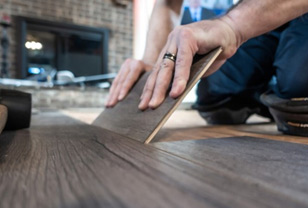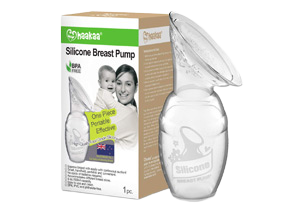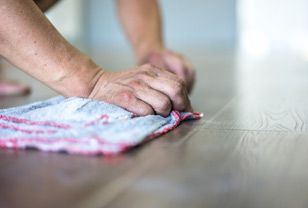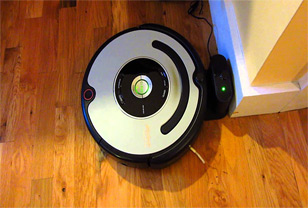When Is the Best Time to Buy Flooring? A Seasonal Guide for Real Savings
New flooring isn’t cheap. Once you add materials, labor, and small extras, the total can jump quickly. The good news: there is a best time to buy flooring, and your calendar can save you as much as your choice of product. In this guide from TheKingLive, our home-care editors combine real quotes, real projects, and real sale cycles so you know when prices usually drop, which seasons are kindest to each floor type, and how to time installation to avoid expensive mistakes.
Quick Answer: Best Time of Year to Buy Flooring
Most homeowners save more by changing when they buy and when they install than by haggling over a few cents per square foot. You do not need every promotion. You just need the right seasonal window and a simple plan.
In many markets, the same pattern repeats every year:
-
The best time to buy flooring (often the cheapest time of year to buy flooring) is usually:
-
Late December to January – clearance events, slower store traffic
-
Mid May to June – strong promotions during renovation season
-
-
Usually, the ideal time to install hardwood flooring is:
-
Fall (September to early November) – stable temperature and humidity, fewer surprises
-
-
The worst times to buy often include:
-
Early fall (August to November) – new lines at full price, high demand
-
Major holidays – crowded showrooms, “deals” that are not always true savings
-
The sections below explain why these windows work, how much they can change your final bill, and what to do if you cannot move your project dates.
When Should You Buy Flooring for the Best Price?
Flooring prices do not rise and fall at random. Retailers plan around inventory cycles, shipping, and new product launches. Homeowners plan around tax refunds, school holidays, and weather. When these patterns overlap, you get very clear “sweet spots” for buyers.
December to January: Clearance Season and Quiet Showrooms
For many buyers we hear from at TheKingLive, late December through January ends up being the single best time to buy flooring if you care about genuine markdowns rather than just a big red banner.
Why this window works:
-
Stores clear out last year’s inventory to make room for new lines
-
Clearance and markdowns in the 15–30% range are common
-
After the holidays, showrooms are quieter, so staff have more time to answer questions and negotiate
How to use it:
-
Watch for words like “clearance”, “discontinued line”, or “last year’s style”
-
Ask directly about off-season or bulk discounts, especially if you are doing more than one room
-
Buy now and store boxes indoors, flat and dry, if you plan to install later in the year
We have seen homeowners price the same floor in October and again in January and find several hundred dollars’ difference on a medium-sized project. The trade-off is small: some designs are older or slightly off-trend. If you prefer classic, timeless looks, that is rarely a problem.
May to June: Promotions in Renovation Season
The second strong window is mid May through June, right in the middle of renovation season.
Why it is powerful:
-
Many retailers run spring and early-summer promotions to capture renovation budgets
-
Tax refunds and saved-up project funds hit accounts, so stores compete with visible discounts
-
Most collections are current, so you get in-season designs at promotional prices
What to watch:
-
Popular colors and sizes can sell out quickly
-
Installers are busy, so labor costs may climb and schedules book out weeks ahead
-
Some “too good to be true” discounts appear on slow-moving or lower-quality products
To make this window work, follow local flooring stores, big-box chains, and reputable online retailers by email or social media. Once you see a real discount on a product line you trust during what is effectively your best time of year to buy flooring, reserve or buy quickly instead of waiting for a better sign.
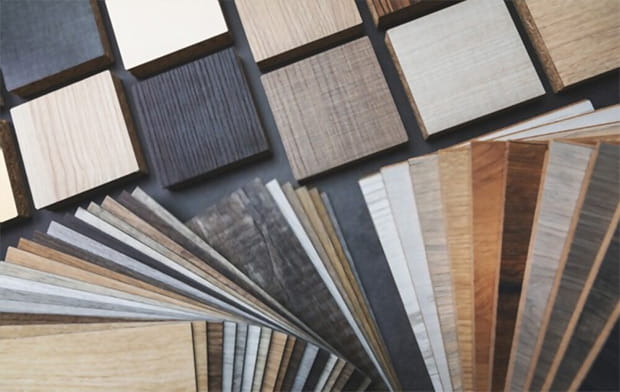
Don't hesitate to get flooring you trust when you see a genuine deal
The Worst Times of the Year to Purchase New Flooring
Just as there are friendly windows for buyers, there are seasons when it is harder to get a fair deal. Knowing these periods does not mean you can never buy then, but it helps you see when the odds are tilted against your budget.
Early Fall: High Demand, Higher Prices
From about August through November, many regions see higher prices and fewer meaningful clearance sales.
Reasons:
-
New flooring lines arrive, and retailers want full margins on fresh stock
-
Many homeowners rush to refresh rooms before winter and the holidays
-
Strong demand means little pressure on stores to discount aggressively
If your main goal is saving money, it is usually smarter to buy earlier in the year or wait for winter clearance, then install later when the conditions inside your home are better.
Holidays and Big Shopping Events
Holiday advertising loves phrases like “lowest price of the year” and “doorbuster deal”. Flooring often behaves differently from small electronics or gifts.
Common problems:
-
Showrooms are crowded; staff have less time for detailed questions about subfloors or humidity
-
The best “holiday deals” may apply to a very narrow list of models or limited stock
-
It is easy to feel rushed and commit before you have measured, compared, or thought through your options
If you can, visit stores and request quotes just before or just after major holidays rather than on the busiest days, especially when you are trying to decide when is the best time to buy flooring. You still get pricing information, but with less pressure and more attention.
Best Time to Buy and Install Hardwood Flooring
Hardwood has more “personality” than laminate or vinyl. It is beautiful but more sensitive to temperature and humidity, which means timing affects both your price and your results.
When to Buy Hardwood Flooring
For hardwood, the buying pattern looks similar to other floors:
-
Best times to buy hardwood flooring:
-
Late December to January – clearance and slower season
-
May to June – strong promotions and sales
-
-
Worst times to buy hardwood:
-
Early fall and heavy holiday periods – high demand, firm pricing
-
A strategy we often see work well:
-
Buy during a winter sale, store the boards correctly indoors, then install in fall when conditions are kinder to wood and adhesives.
One TheKingLive reader priced a mid-range hardwood in early September, then checked again during January clearance. Same store, same product line, same square footage. The January quote came back almost 20% lower on materials alone. The only thing that changed was the month.
➜ RELATED: Does Laminate Flooring Need to Acclimate? - Laminate Floor Installation & Maintenance Guide
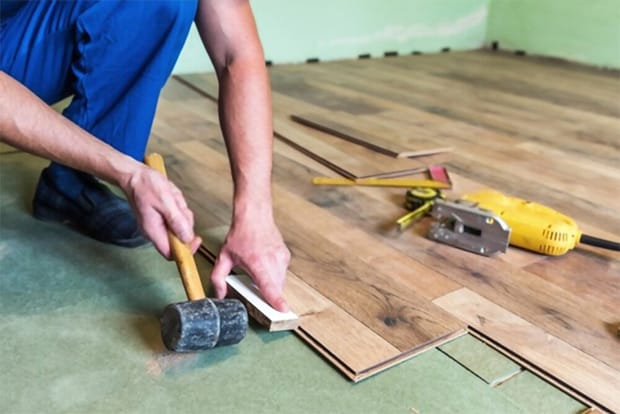
Vinyl and laminate lack the "personality" of hardwood
When Is the Best Season to Install Hardwood Floors?
From a technical standpoint, fall is usually the safest and most forgiving season for hardwood installation.
Why fall works:
-
Temperatures are moderate, often within the range manufacturers recommend
-
Indoor humidity tends to be stable, reducing the risk of cupping, gaps, and warping
-
Adhesives cure more consistently, so boards settle in with less movement
You can install hardwood in summer or winter, but then you depend more on humidifiers, dehumidifiers, and longer acclimation times to control the indoor climate. For most homeowners, aiming to buy earlier in the year and install in fall creates a good balance between cost and performance.
When Does Flooring Go on Sale for Laminate and Vinyl?
Laminate and vinyl plank flooring are designed for busy homes and changing seasons. They are more forgiving than hardwood, so you have more flexibility in both buying and installation.
They are popular because they are:
-
More affordable than solid hardwood
-
Less sensitive to moderate changes in moisture and temperature
-
Available in realistic wood and stone patterns that look convincing at a glance
Sales and Timing for Laminate and Vinyl
Laminate and vinyl usually follow the same big sale cycles as other floors:
-
Late-December to January clearances
-
Spring and early-summer promotions, including May to June
-
Extra markdowns when new colors launch and older designs are cleared out
-
Discounts on overstock or end-of-line products
Unlike hardwood, these floors are less picky about installation season, as long as you:
-
Let them acclimate for at least 48 hours in the actual room
-
Keep indoor temperature and humidity within the manufacturer’s recommended range
For most households, the best time to buy laminate or vinyl is simply whenever you find a solid sale from a reputable brand — effectively your own best time to buy flooring — and you can store the boxes flat, dry, and indoors until you are ready to install.
When to Install New Floors: Cost and Contractor Availability
Timing is not just about sale tags. Labor pricing changes across the year too. Contractor schedules behave a lot like flights: when demand spikes, prices and waiting times rise.
When calendars are full, you pay more and wait longer. When calendars are light, many installers are more open to negotiation, better dates, or small extras.
You can usually expect higher labor costs when:
-
Tax-refund money arrives in spring
-
Early summer projects ramp up
-
The pre-holiday rush in late fall begins
You can often expect better deals and more flexible dates in:
-
Late December to January
-
Quieter weeks in late winter
A simple two-step plan, often recommended by TheKingLive, works well for many readers:
-
Buy flooring during a material sale, even if installation will happen later.
-
Schedule installation for an off-peak month when labor is cheaper and availability is better.
In practice, this timing difference alone is sometimes enough to upgrade your underlayment or step up one quality tier in flooring without changing your total budget.
The Four Seasons: How Climate Affects Flooring Installation
You can install floors in any season, but each one has its own risks, especially for wood-based products. One rule guides them all: temperature and humidity make boards move, whether you see it or not.
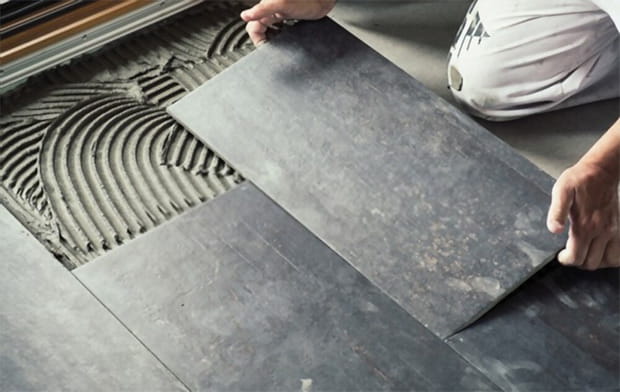
Any season can be used to build flooring, but there are risks associated with each, particularly with wood floors
Spring: Fresh Start, High Moisture
Spring feels like a fresh start, but it is often wet.
-
Rain and snowmelt push humidity levels up
-
Boards can swell or buckle if they absorb moisture and are fitted too tightly
-
Cooler temperatures mean wood may expand after installation as the weather improves
Summer: Convenient, but Hot and Humid
Summer brings long days and school holidays, but also heat and humidity in many regions.
-
Heat makes boards expand, especially in sunny rooms
-
High humidity can cause cupping or warping over time
-
Some adhesives take longer to cure in hot, damp conditions
If you install in summer, keep the indoor climate as steady as possible with air conditioning and dehumidifiers, avoid storing flooring in hot garages or sheds, and never skip expansion gaps.
Fall: Often the Sweet Spot
Fall is often the sweet spot for hardwood and many engineered floors.
-
Temperatures are moderate and predictable
-
Indoor humidity sits in a comfortable mid-range
-
It is easier to keep the room stable while the floor acclimates and adhesives cure
If you bought your flooring during a winter or spring sale, fall is usually the best time to lay it and let it settle under gentle, stable conditions.
Winter: Dry Air, Extra Care
Winter looks tempting if you want a new floor before the holidays, but indoor air can be very dry.
-
Low humidity can make planks shrink and crack
-
Cold boards may contract during installation, then expand later and create gaps or pressure
-
Adhesives may struggle to bond in cold or unheated spaces
If winter is your only option, even though it is not usually the best time to buy hardwood flooring or install it, use humidifiers, avoid storing flooring in unheated areas, and allow extra acclimation time so the boards have a chance to adjust before you lock them into place.
Budgeting: Material Cost vs Labor Cost
When you think about timing, imagine two separate lines in your budget:
-
Material cost per square foot
-
Labor cost per square foot
Seasonal flooring sales mainly affect materials. Contractor demand drives labor.
Getting two or three quotes in different months can show you how much timing alone changes your total project cost. Sometimes shifting your installation date out of a peak month frees enough budget to upgrade from entry-level laminate to a higher-quality product or to better underlayment, without changing your overall spend.
Seasonal patterns and discount ranges can vary by region and retailer, so use this guide as a planning framework. Then check current promotions and installation conditions with local stores and contractors where you live.
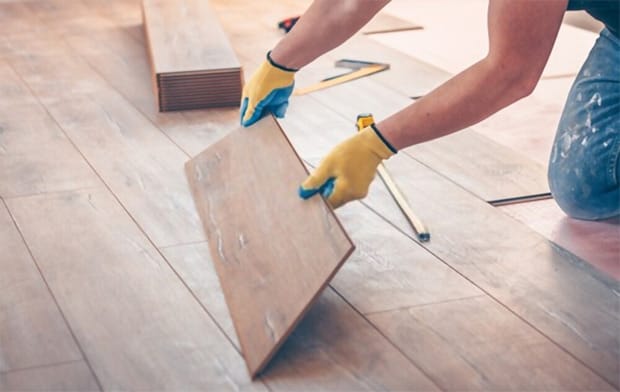
Use this information as a guide because seasonal trends differ by store and location
Time Your Project, Not Just Your Purchase
You are not only choosing a product; you are choosing when to buy it and when to put it down. Those dates matter more than most buyers realize.
If you plan ahead, you can buy when materials are cheapest, install when conditions are safest, and hire contractors when their calendars are not overloaded. Even a 15–30% saving on materials or labor can upgrade your product or free budget for the rest of your renovation. With a simple, seasonal plan like the ones we use at TheKingLive, you stop relying on random sale signs and start timing your flooring project around season, climate, and strategy.
FREQUENTLY ASKED QUESTIONS
- 01. How Should I Clean a Brand-new Wood Floor?
-
Use a vacuum designed for hardwood or vinyl plank with non-abrasive tools, avoid standing water, and mop with a damp (not wet) pad and a cleaner approved for your floor type. Always follow the manufacturer’s “do not use” list so you do not strip the finish or leave residue that shows every footprint.
- 02. How Long Should I Let Hardwood Flooring Acclimate?
-
A common rule of thumb is around three days in normal living conditions, but always follow the instructions on the box. Keep the cartons in the actual room, not in a garage, and hold temperature and humidity close to what you will have after installation. Proper acclimation helps prevent warping, buckling, and gaps over time.
- 03. Does Laminate Flooring Need Underlayment?
-
Yes, in most floating installations it does. Underlayment lets the floor float evenly over minor subfloor imperfections, supports the locking system, and reduces noise. Skipping it can lead to squeaks, bounce, and joints that fail early, so it is rarely the right place to cut corners if you want the floor to feel solid.






